Most Zephyr readers are probably aware of Interior Secretary Haaland’s ongoing review of the two large national monuments in southern Utah. A proper betting line would probably set the 1.9-million acre, ITC-proffered monument map as the odds-on favorite to be adopted as a new Bears Ears boundary at the end of the process. If so, that will make it three proclamations by three Presidents setting three different monument boundaries. But I’d like to put that particular dysfunction aside to consider another.

At the end of March, the Supreme Court declined, for reasons that don’t matter here, to consider a legal challenge to the Obama-era creation of the Northeast Canyons and Seamounts Marine National Monument. Denials of certiorari are usually not newsworthy, but in this instance it was accompanied by a statement expanding on the Court’s non-decision. The whole thing is short and easy reading, but here’s the key passage:
While the Executive enjoys … flexibility in setting aside a monument under the Antiquities Act, that flexibility, as mentioned, carries with it a unique constraint: Any land reserved under the Act must be limited to the smallest area compatible with the care and management of the objects to be protected… Somewhere along the line, however, this restriction has ceased to pose any meaningful restraint. A statute permitting the President in his sole discretion to designate as monuments “landmarks,” “structures,” and “objects”—along with the smallest area of land compatible with their management—has been transformed into a power without any discernible limit to set aside vast and amorphous expanses of terrain above and below the sea.
I have noted before that one subplot, and maybe it’s really the main narrative, of the Bears Ears controversy is the long-simmering legal fight over the use of the Antiquities Act. Now we have a comment from the Chief Justice suggesting that the Supreme Court is, as the kids say, here for it.
So it seems like a good time to share the following eight points on the Antiquities Act. If nothing else, I can just about promise that readers who make it to the bottom of the list will be among the most informed consumers of legal news on the topic. If that’s not enough, there’s also a bonus point nine in which I make a modest proposal for the future use of the Antiquities Act.
(An editorial note: I use below the terms “maximalist” and “textualist” to describe the two sides of the legal debate. Please excuse the oversimplification.)
1. The relevant text of the Act is short. For your convenient reference as you proceed through the following points, here it is:
[T]he President of the United States is hereby authorized, in his discretion, to declare by public proclamation historic landmarks, historic and prehistoric structures, and other objects of historic or scientific interest that are situated upon the lands owned or controlled by the Government of the United States to be national monuments, and may reserve as a part thereof parcels of land, the limits of which in all cases shall be confined to the smallest area compatible with proper care and management of the objects to be protected…
2. In matters of the law, what ultimately counts is the text that is enacted and not merely debated. Still, the legislative history of the Act leaves little doubt that Congress did not intend for the Act to be used as a general conservation tool. As the very title of the Act suggests, the purpose of the Act was narrowly aimed at the preservation of historical artifacts. Withdrawal caps of 320 and 640 acres were considered but not included in the final bill. More broadly, this exchange from the legislative debate is indicative of both the scale and scope contemplated by Congress in passing the Act into law:
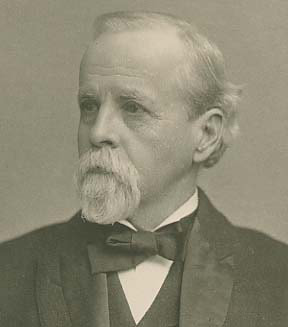
Mr. LACEY (Antiquities Act Sponsor): There has been an effort made to have national parks made in some of these regions but this will merely make reservations where the objects are of sufficient interest to preserve them.
Mr. STEPHENS of Texas: Will that take this land off the market or can they still be settled on as part of the public domain?
Mr. LACEY: It will take that portion of the reservation off the market. It is meant to cover the cave dwellers and cliff dwellers.
Mr. STEPHENS of Texas: How much land will be taken off the market in the Western States by the passage of the bill?
Mr. LACEY: Not very much. The bill provides that it be the smallest area necessary for the care and maintenance of the objects to be preserved.
Mr. STEPHENS of Texas: Would it be anything like the forest-reserve bill by which seventy or eighty million acres of land in the United States have been tied up?
Mr. LACEY: Certainly not. The object is entirely different. It is to preserve these old objects of special interest and the Indian remains in the pueblos in the Southwest, whilst the other reserves the forests and the water courses.
Jump cut to 2021. A law sold on the promise that it would “certainly not” be used as a tool of general conservation to tie up “70 or 80 million acres of land in the western states” has in fact been used as a tool of general conservation to tie up over 70 million acres of land, mainly in the western states. Marine monuments blanket hundreds of millions of additional acres.
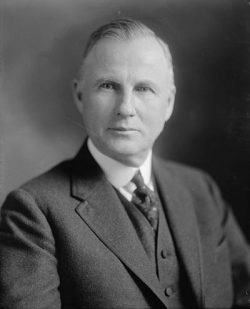
3. This was just the fourth time Chief Justice Roberts has published a formal comment in connection with a denial of certiorari. That suggests that (at least) the Chief Justice thinks there are unsettled Antiquities Act issues worthy of consideration by the Court.
The specific issue raised by the Chief Justice is one that textualists have raised for decades and maximalists have brushed off for just as long. The statement that the Act confers power to the President “without any discernible limit” would elicit not concern from maximalists, but a simple nod of approval.
.
4. The Act has been around since early in the last century, but the law teasing out the proper limits of its use remains quite undeveloped. It is true that many thousands of pages have been written about the Act in the congressional research memos, law review articles, and amicus briefs that comprise the official and quasi-official exoskeleton of our legal system. (You’re reading a very abbreviated summary of that body of knowledge now.) But it is also true that relatively few Antiquities Act cases have actually been decided by courts at all, and substantially all the jurisprudence to emerge from those cases has rested on just one paragraph from one decision delivered 100 years ago by the Supreme Court. Given how much has come to depend upon it, that paragraph is worth quoting in full:
The defendants insist that the monument reserve should be disregarded on the ground that there was no authority for its creation. To this we cannot assent. The act under which the President proceeded empowered him to establish reserves embracing “objects of historic or scientific interest.” The Grand Canyon, as stated in his proclamation, “is an object of unusual scientific interest.” It is the greatest eroded canyon in the United States, if not in the world, is over a mile in depth, has attracted wide attention among explorers and scientists, affords an unexampled field for geologic study, is regarded as one of the great natural wonders, and annually draws to its borders thousands of visitors.
In context, the excerpt above from Cameron v. United States reads as little more than dictum, a glancing mention on the way to a far more developed analysis of the issues the Court viewed as central in that case (mainly, whether Ralph Cameron had a valid pre-existing mining claim that survived monument proclamation). By my count, the passage addressing the limits of the Act amounts to a little over 100 words out of a roughly 3,500-word opinion. Put bluntly, the foremost Antiquities Act case barely mentions the Antiquities Act.
5. The quoted paragraph from the Cameron opinion is the legal foundation upon which all landscape-scale monuments rest, but it hardly amounts to a principled, repeatable legal test. It also does not take a particularly careful cross-reference with the statute to note that the Court in Cameron only considered, at most, one of the Act’s relevant clauses. I think approximately everyone would agree that the Grand Canyon is an extraordinary natural feature, but the Act requires more. Unfortunately, instead of carefully applying the plain text of the Act to the facts in front of them, the Court simply stated the obvious and moved on. The “smallest area” clause of the Act was entirely disregarded and anyone who has carefully read the Act was left with the koan-like implication that the Grand Canyon is an object “situated upon” land.
Let’s parse some of the relevant statutory language to make that last point more explicit. The text of the act provides for the protection of, among other things, objects of scientific interest “situated upon” land. By itself, the distinction made by the Act between objects and the land upon which they sit should make it possible for a federal court to deduce reasonably clear and tangible limits on a President’s use of the Act. In particular, the distinction between “objects” and the land upon which they are “situated” should have made highly suspect any use of the Act as a tool for general landscape- or ecosystem-scale conservation. But the Court in Cameron completely missed or ignored this distinction, and, for reasons laid out in the next point, its significance has never really been reconsidered.
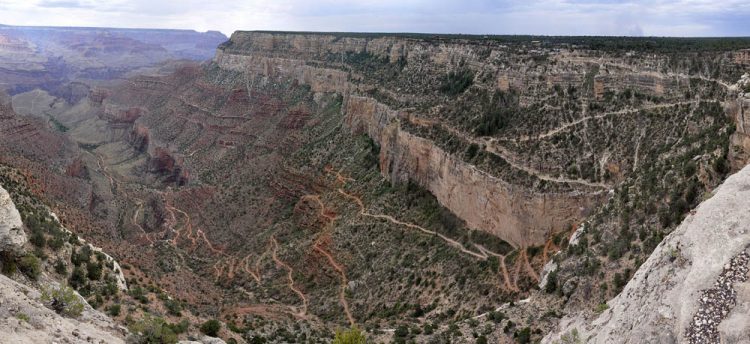
6. It is hard to overstate the impact of the Cameron decision, both in practical and strictly legal terms.
First, if the elements of the Act that appear to limit its reach are just window dressing, that raises a constitutional question: the “nondelegation doctrine” is the proposition that it is impermissible for Congress to delegate its power to the Executive branch without also providing an “intelligible principle” upon which courts can decipher the proper exercise of that power. Returning to the Cameron opinion with this concept in mind, it is hard to make out such an operative principle. After all, there is literally nothing that falls outside the conceptual set “object of scientific interest” as defined with complete discretion by a particular President.
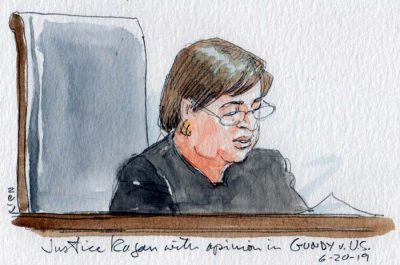
Second, Supreme Court cases constitute binding precedent on lower federal courts, so the Cameron decision has effectively put the development of Antiquities Act case law on ice. While it is true the Act has been challenged numerous times, including on grounds that it violates the nondelegation doctrine, in each case the courts have limited their analysis to the kind of pro forma review offered by Cameron.
Put more simply, Cameron both vastly expanded the role and power of the executive and vastly diminished the role and power of the judiciary in determining the legal boundaries of the Act. The District Court opinion in Utah Association of Counties v. Bush, the lawsuit challenging the creation of Grand Staircase-Escalante National Monument, is representative:
Despite what may have been the intent of some members of Congress, use of the Antiquities Act has clearly expanded beyond the protection of antiquities and “small reservations” of “interesting ruins.” Nothing in the language of the Act specifically authorizes the creation of national monuments for scenic purposes or for general conservation purposes. Nonetheless, several presidents have used the Act to withdraw large land areas for scenic and general conservation purposes.
…
The record is undisputed that the President of the United States used his authority under the Antiquities Act to designate the Grand Staircase Monument. The record is also undisputed that in doing so the President complied with the Antiquities Act’s two requirements, 1) designating, in his discretion, objects of scientific or historic value, and 2) setting aside, in his discretion, the smallest area necessary to protect the objects. With little additional discussion, these facts compel a finding in favor of the President’s actions in creating the monument. That is essentially the end of the legal analysis. Clearly established Supreme Court precedent instructs that the Court’s judicial review in these circumstances is at best limited to ascertaining that the President in fact invoked his powers under the Antiquities Act. Beyond such a facial review the Court is not permitted to go.
“In his discretion” indeed. Despite assertions to the contrary, it defies the basic meaning of words to assert that a standard of non-review such as the one described above satisfies the nondelegation doctrine. And in case it still isn’t clear, this sort of logic, which permeates Antiquities Act case law, is positively Nixonian: if the President makes a monument of something, it can’t be illegal.
7. It is worth repeating the point that the GOP, mainly through the operation of the Federalist Society, has been engaged in a decades-long project to deeply influence both the personnel and ideology of the American judiciary. Many observers noted the savvy move by then-candidate Donald Trump to announce during the 2016 campaign his short list of prospective nominees to the Supreme Court. The list, handpicked by the Federalist Society and Heritage Foundation, made it clear that a President Trump could be counted on as a medium through which conservatives could realize their judicial aspirations. President Trump absolutely delivered on this promise: besides the three young, high-profile Federalist Society stalwarts Trump appointed to the Supreme Court, his administration was responsible for installing about 30% of the judges who now sit on federal courts of appeal (the level of federal court just below the Supreme Court).

In broad terms, one of the most frequently stated goals of the Federalist Society is to rein in perceived overreach by the “Administrative State,” and one of the most straightforward moves courts could make to that end would be to revive a nondelegation doctrine that has been on life support for decades. More specifically, it isn’t hard to imagine how such judges might view Antiquities Act maximalism. See, for example, this comment, by Erin Hawley, a former clerk to Chief Justice Roberts and the wife of Senator Josh Hawley.
To be sure, it is impossible to predict how this institutional background might play out in any specific case involving the Antiquities Act. There’s no guarantee the Roberts Court will even hear such a case. But I also think this background, along with the Chief Justice’s written statement, makes it very hard to say it remains a safe bet that the Roberts Court will run away from a full reckoning with the Antiquities Act the way courts have done in the past. And, as should be clear from the preceding points, I personally think a willing Supreme Court has plenty to work with to reach a determination that existing case law (and presidential practice) does not square with the text (or intent) of the Act.
8. It is a bit of an oddity how much the Antiquities Act matters in certain places, and how little it matters anywhere else. In large part, this is an accident of history.
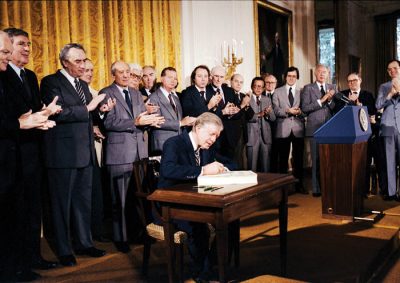
By the time the Act became law, the only really large tracts of federally-owned land left were in the newly acquired, sparsely populated western states, and it took quite a few more decades after the barn door was left open in Cameron for presidential use of the Act to reach a full gallop. So, simply by virtue of the timeline of White settlement and continental acquisition by the U.S. government, the vast majority of Americans live in states in which minimal federal land remains. Such states have been treated as effectively exempt from the Act’s use as a general conservation tool. Another two states, Alaska and Wyoming, were able to secure legislative exemptions on the heels of controversial uses of the Act in those states.
This imbalance among the states has enormously benefited Act maximalists, both in Congress and in the court of public opinion. For most Americans, and for their congressional representatives by extension, there simply are no compelling reasons to rein in the use of the Act and plenty of reasons to encourage its expansive use. Overcoming the inertia of this incentive structure through legislation has become, at best, a herculean task.
And don’t forget this detail: a President could establish a monument, Congress could pass a law rescinding the monument, the President could veto the law rescinding the monument, and Congress would have to muster a 2/3 majority to override the veto. As with any other law, the same procedural dynamic would also apply to congressional action taken to directly amend or rescind the Act itself.

9. Finally, the thought experiment I promised at the top.
What if a future President leaned even further into the truly maximalist use of the Antiquities Act? Adirondack National Monument, anyone? Or how about expanding Stonewall National Monument to include all of Manhattan, or at least Greenwich Village?
After all, the Act applies to land owned or controlled by the federal government. Surely if the Act can be applied to a massive undersea landscape located in an offshore Exclusive Economic Zone, it can be applied to Lake Placid. Monument proclamations don’t supplant the pre-existing property rights of individuals or states, so surely there would be nothing troubling about the above scenarios to the people of New York.
Why should we as Americans be hidebound by the assumption that the muscular use of the Antiquities Act be reserved for the public lands states out west? If the only thing limiting the use of the Act really is presidential imagination, maybe our Presidents should be thinking much, much bigger.
Stacy Young is a regular contributor to the Zephyr. He lives in Southwest Utah.
To comment, scroll to the bottom of the page.
Zephyr Policy: REAL NAMES ONLY on Comments!
Don’t forget about the Zephyr ads! All links are hot!



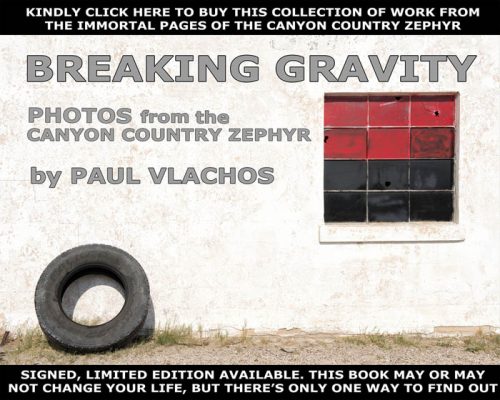

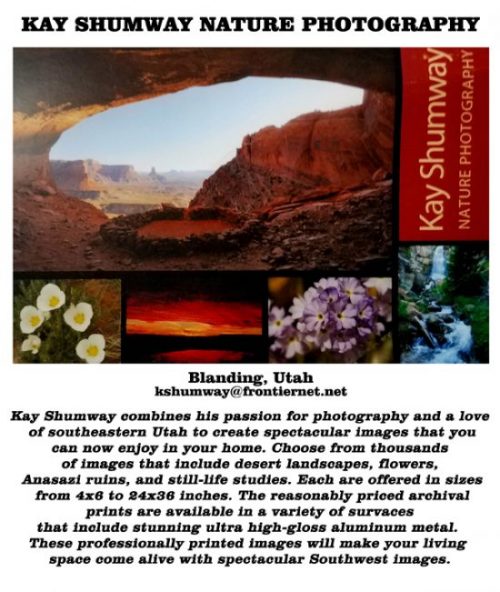
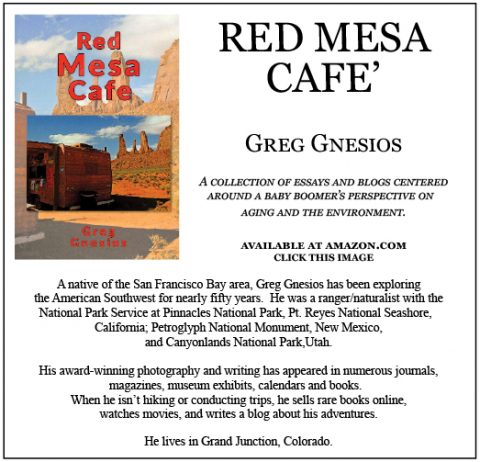


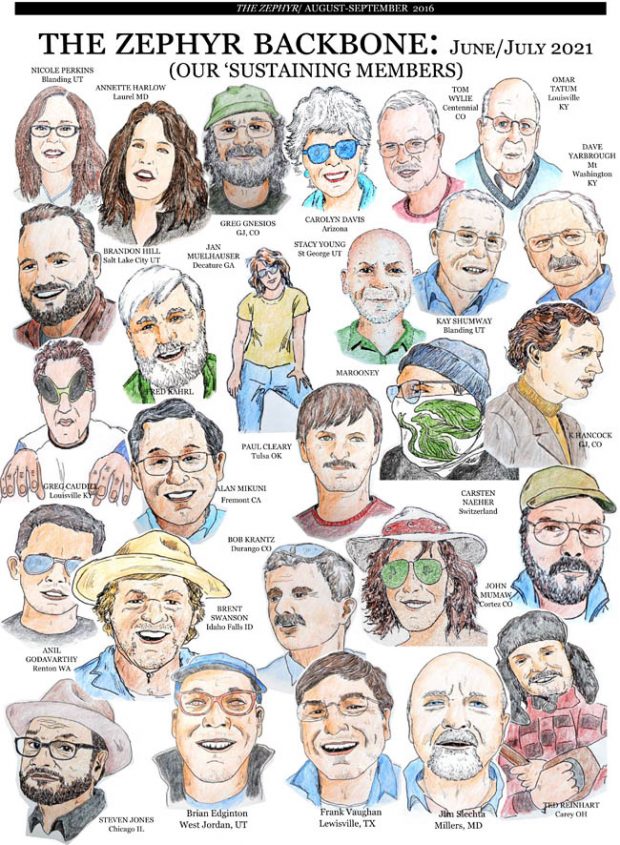
This is a useful summary and, up to a point, raises good questions. But it takes flight at the end. Conservation history is extensive and detailed. I don’t think anyone knows it all. Almost everything that could happen has happened, even the un-designation (not just shrinking) of an NM. But I have never seen a hint that anything other than federal land could be/would be designated as a monument. There was an abortive movement to make part of the state lands in the Adirondacks a national park (and the High Peaks would be better managed if that movement had succeeded), but the “threat” (which is the only way I can read this) of an Adirondack, or similar, NM that takes in private lands is a straw dog.
I point out that the “smallest area compatible with the proper care” of a resource is an empirical question. It has an answer rooted in facts and systematic analysis, including consultation with affected people. That answer may evolve as we better understand the resource, but it is not (or at least does not have to be) arbitrary, as this implies it might. Would the Court really invalidate such an analysis? That would make a matter of fact into a matter of law. One hopes not.
This gets thick. What types of management are entailed in proper care? Who defines these terms? Is the analysis sufficient? The Executive Branch at least arguably has or can obtain the expertise to define the terms. The Judiciary does not, so they have not. I’d say that’s wise, especially since there is, as Stacy points out, a legislative response to a designation that Congress perceives as inappropriate.
What if we could change the Antiquities Act to require Senate confirmation of nominated monuments?
There is an interesting precedent for that idea, but on a state by state basis. Here’s the Wikipedia reference…
“Presidential powers under the Act have been reduced twice. The first time followed the unpopular proclamation of Jackson Hole National Monument in 1943. The 1950 law that incorporated Jackson Hole into an enlarged Grand Teton National Park also amended the Antiquities Act, requiring Congressional consent for any future creation or enlargement of National Monuments in Wyoming.[11] The second time followed Jimmy Carter’s use of the Act to create 56 million acres (230,000 km2) of National Monuments in Alaska. The Alaska National Interest Lands Conservation Act requires Congressional ratification of the use of the Antiquities Act in Alaska for withdrawals of greater than 5,000 acres.”
[…] those interested, Stacy Young wrote an interesting article in the Canyon Country Zephyr on the legalities and some legal […]
[…] those interested, Stacy Young wrote an interesting article in the Canyon Country Zephyr on the legalities and some legal […]